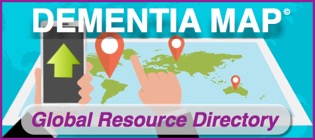Dementia Care Professionals: How to Care For and Grow Your Business
 Submitted by:
Submitted by:
Anne DeLorenzo and Joanna Dennis
AgePros
The care and growth of your business can often feel like a second (or maybe even a third) job. Meanwhile, the need for experienced professionals with your skills is increasing exponentially every day. Taking some of the work out of growing your business, and being well-positioned for opportunities to come, may be a bit easier (and less costly) than you think.
Caring for those with dementia is personal for both you and your client. It’s also critical. By the time you’re called, your potential client needs answers to their many caregiving challenges, fast. So how do you manage to be personal, professional, and prepared?
Let’s start with the basics. Why you?
Make your image as professional as you are.
Use a letterhead and email signature for any communication, invoice, or prospecting. Include your name accreditations and your preferred contact information. Make sure all your contact information is up-to-date and be sure to list any and all credentials.
Create your email correspondence in advance, so it’s ready to go.
Make sure you have a balance between personal and professional. Remember that your clients are looking for both expertise and empathy. They need to know what experience you have, whether you’ll be a good fit, and why you care.
Knowing how to tell your story and differentiate yourself will also help you create an effective Linked-in profile and prepare for face-to-face prospecting and networking meetings.
Here are additional thoughts on how best to answer the question, Why you?
Think about using key words potential clients are looking for.
Friendly, approachable, good listener, empathetic, experience, professional, hardworking, excellent communication skills, skilled and patient.
Be sure to highlight your experience.
Example: “I am a certified dementia practitioner with 7 years’ experience as a home health aide. I have developed a compassionate approach and work hard to get to know my clients, what they need, what they like and what they respond to positively.”
Example: “I have more than 10 years’ experience as a music therapist working primarily in memory care units. I enjoy listening to older people, I am a very patient person and am always happy to work at my client’s pace, following their lead.”
Be specific about your skillset.
Example: “I am experienced in personal grooming, and I enjoy helping clients look their best. I can assist with hygiene, toileting, eating, cooking, cleaning, and any administrative tasks which need support. I have a full clean driving license and enjoy taking clients out to meet friends.”
Example: “I have managed a memory care unit for over 5 years. I work closely with families to make sure their loved ones are thriving based on a model that is patient centric.
Tell your clients what drew you to caregiving. Was it personal experience?
Example: “I became a caregiver while looking after my partner. When he died, I decided to carry on, working as a live-in caregiver to support people with dementia.”
Example: “I love looking after other people. When my children left home, I decided to become a caregiver and continue what I’m good at.”
Include any hobbies or interests that may make for a good connection with your potential client.
Example: “I love reading, especially crime fiction novels. I am part of my local church and help to run the children’s activities. Last year, I got a Scottish terrier puppy called ‘Bobby’ and I love taking him on long walks.”
Example: “I am a good cook! It’s a big part of my life and I love trying out new recipes. I can bake well and once won a competition for my pineapple turnover cake.”
End with a strong call to action.
Urge your client to contact you. Be polite and friendly.
Example: “Please get in touch if you think I could help you. My cell is X and you can also email me at X.”
Putting it all together in one letter doesn’t have to take long or be long.
Example: “I am a physical therapist and a certified dementia care practitioner with 5 years of experience. I know how to listen and communicate effectively with my clients. I take pride in delivering compassionate and empathetic care. I can also help train other physical therapists and assist them in getting their dementia care credentials.
Caring for my parents gave me the desire to care for others which lead me to a career in caregiving. I enjoy old movies and cooking new recipes.
Please get in touch and I’ll reply as soon as I can. ”
Be disciplined in collecting testimonials/recommendations.
Build a stash …don’t wait until you need them. Gather recommendations from clients and other business professionals you encounter. Clients often ask physical therapists, social workers, and other dementia care professionals for recommendations. So don’t be shy. Everyone is trying to make their business grow and they may ask the same of you. An added tip: new recommendations are a great way to keep your Linkedin or business profile fresh.
Now that you know how to present yourself, you’re ready to get out in the marketplace.
If you haven’t already, consider creating any or all these social profiles:
It’s mostly free and let’s face it, we live in a digital world. Chances are, potential clients will Google you before agreeing to meet or connect. You can use all the information you’ve gathered for your email. Just follow the same guidance.
Stay top of mind by staying in touch.
Keep up with professionals you meet not just those you have worked with or have referred clients. You never know where your next business opportunity may come from
Reach out every 4-6 weeks let your contact know what you’re up to.
Tip: Emails sent before 6am or after 8pm get read. Check your email platform on how to automate delivery of your emails.
Tip: Digital isn’t everything. A handwritten note really stands out mailboxes these days are a lot emptier than inboxes.
Visit dementia communities in your area.
Meet facilities managers or other professionals looking for caregivers like you. Leave your card and be sure to get their contact information. And always follow up with an email a few days later, while your meeting is still fresh in their minds.
You don’t have to be social, just follow those who are.
Who has time to post and comment? Why not follow organizations or individuals you’re interested in. It’s a great way to keep current .
Tip: Check out these organizations and people….and feel free to add your own.
- National Council of Certified Dementia Practitioners
- Alzheimer’s Association
- American Association on Aging
- Society of Certified Senior Advisors
- The National Council on Aging
- The CNA Association
- Dementia Map
Give yourself credit.
Do you prepare checklists for your clients? Gather the forms they need? Share best practices or advice? Make sure people know your great ideas are yours. Organize material you always use with clients into a binder or desktop folder that’s easy to share with new clients and remember to Put your name on it! These materials are a good way to advertise just how organized and helpful you can be. It’s a complicated and confusing time for your clients. So, take credit for making caring for their loved ones that much easier.
The journey of thousand miles begins with a single step. And a good map.

Now you know, the hard work of laying a foundation for growing your dementia care business really isn’t that hard. It’s a journey. One you’ve already begun. Sure, it involves discipline, smarts and caring.
All things you’ve already shown you possess in abundance. Truth is, the most difficult part is taking those first steps, and making them part of your routine. Good news — now you have a map.
Good luck!
Is growing your business a priority?
This article is brought to you by AgePros.net, the only blog for aging industry professionals. If you would like a one on one consultation on growing your business, visit agepros.net or email info@agepros.net.
 Submitted by:
Submitted by:
Anne DeLorenzo and Joanna Dennis
AgePros
Is growing your business a priority? AgePros is the only blog for aging industry professionals. Get in touch to schedule a one-on-one consultation on growing your business.


